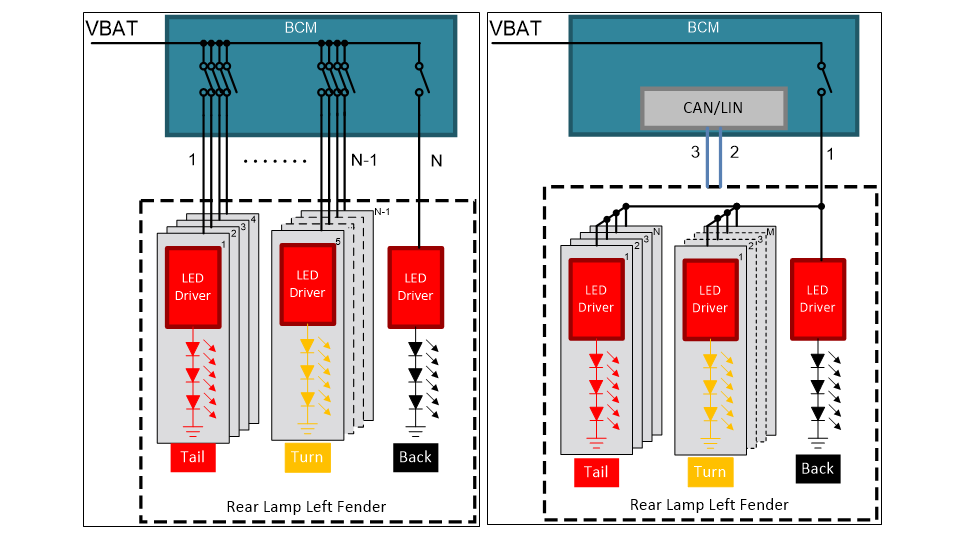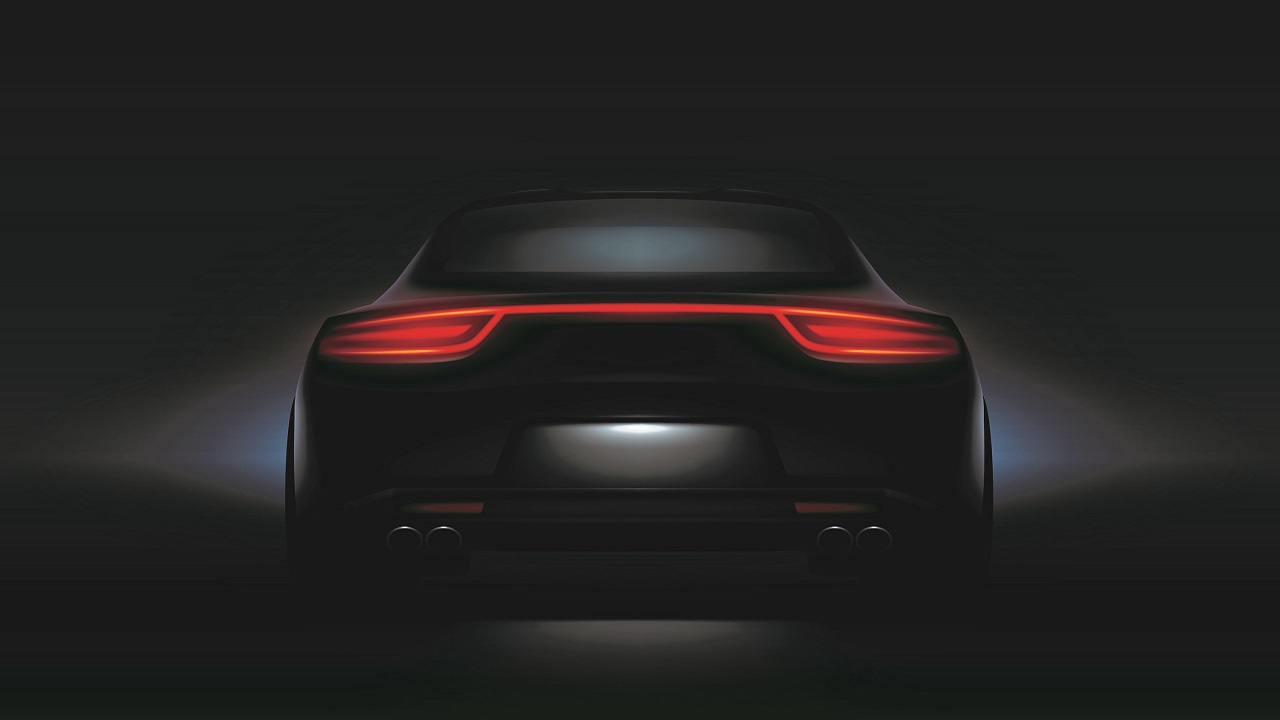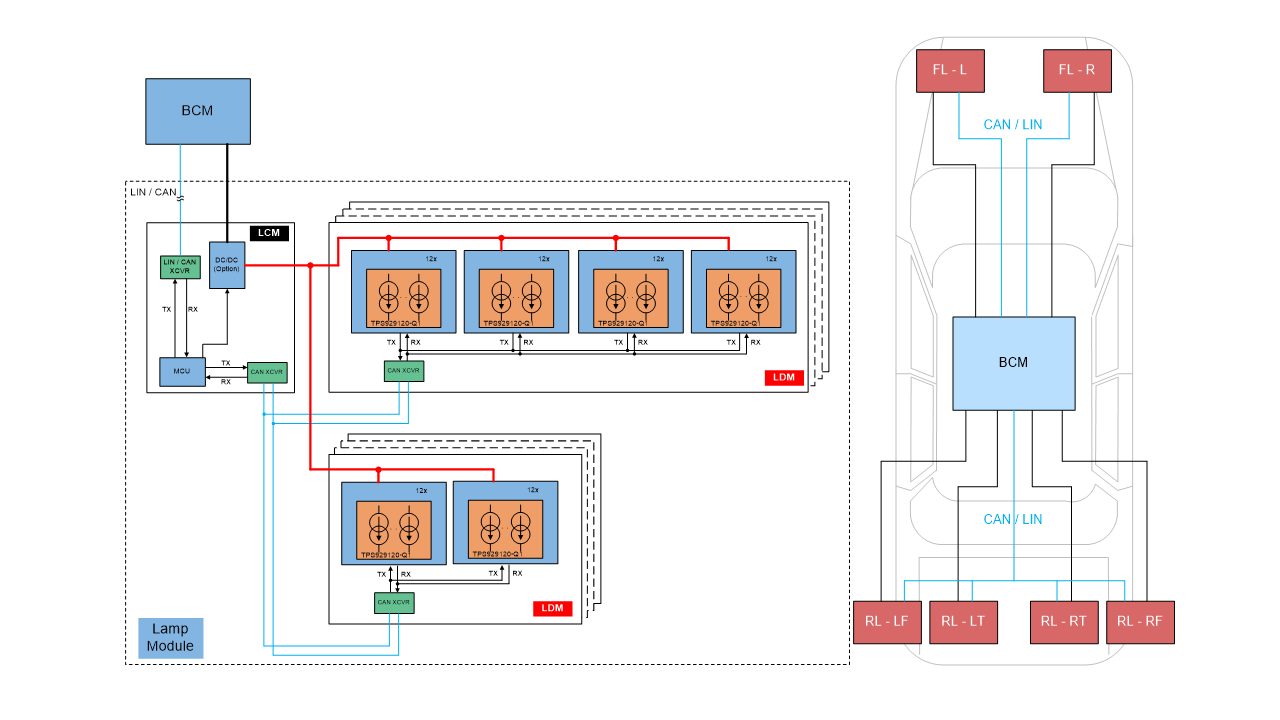SSZT390 october 2019 TPS929120-Q1
Automotive rear lighting systems have evolved from a signal that simply indicates a braking automobile to a symbol of an automotive brand.
Automotive rear lighting systems need to accommodate custom designs from automakers while still remaining useful for signaling. In this article, I’ll look further into automotive rear lighting system trends, new challenges that these trends bring and solutions that address these challenges.
The first trend is unique animation in automotive rear lamps to symbolize a brand identity. Increased demand for complex animation in automotive lighting requires independent control of LEDs, but the first design challenge is that you cannot use enough analog LED drivers to drive the number of LEDs required to independently control a lighting application. Only LED drivers with a digital interface can effectively drive pixel-controlled lighting applications. Figure 1-1 shows the architectures for pixel control of a traditional rear lamp and a new rear lamp.
 Figure 1-1 Traditional and new rear lamp
architectures for pixel control
Figure 1-1 Traditional and new rear lamp
architectures for pixel controlThe second market trend of automotive rear lighting systems is that the shape of an automotive rear lamp is getting longer – sometimes, as shown in Figure 1-2, the rear lamp extends across the entire rear end of the car body.
 Figure 1-2 Long automotive rear
lamp
Figure 1-2 Long automotive rear
lampAutomotive rear lamps that extend across the back of an automobile mean long wires across the entire printed circuit board. This presents a significant design issue, because the LED drivers must connect directly to a microcontroller (MCU), with wires in traditional single-ended interfaces for long-distance off-board communication. It is difficult for such a complex architecture to meet strict electromagnetic compatibility (EMC) requirements. Therefore, using an external physical layer transceiver is essential to effectively implement long distance off-board communication for automotive lighting, as shown in Figure 1-3.
 Figure 1-3 Typical application diagram
for long-distance off-board communication
Figure 1-3 Typical application diagram
for long-distance off-board communicationA third market trend is increasing the importance of robustness. The robustness of automotive rear lamps is directly connected to road safety, so drivers need to check the rear lamps of their automobiles regularly. Even a tiny mistake can lead to an accident. That’s why it’s essential to have automotive rear lighting systems capable of conducting self-diagnostics.
TI’s TPS929120-Q1 helps designers resolve the design challenges arising from automotive market trends. The TPS929120-Q1 is an automotive 12-channel LED driver with FlexWire interface that address the increasing need to individually control each LED.
By using an industry-standard CAN physical layer, the Universal Asychronous Receiver Transmitter-based FlexWire interface of the TPS929120-Q1 easily accomplishes long-distance off-board communication without impacting EMC.
Furthermore, the TPS929120-Q1 meets multiple regulation requirements with open-circuit, short-to-ground and single LED short-circuit diagnostics. A configurable watchdog automatically sets fail-safe states when the MCU connection is lost, and with programmable electrically eraseable programmable read-only memory, you can set the TPS929120-Q1 for different application scenarios.
The TPS929120-Q1 enables unique automotive lighting designs with improved performance as well.
Additional resource:
- Read the white paper, “Trends and topologies for automotive rear lighting systems.”